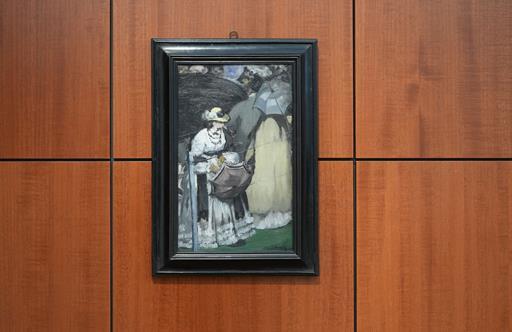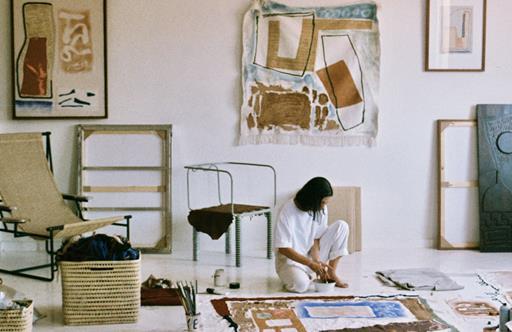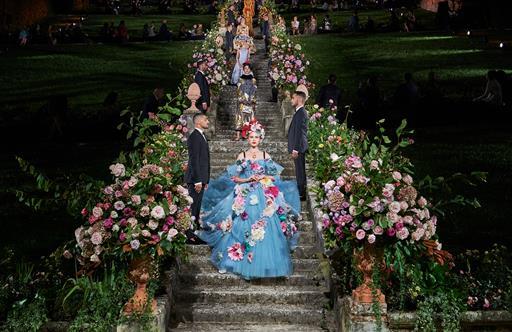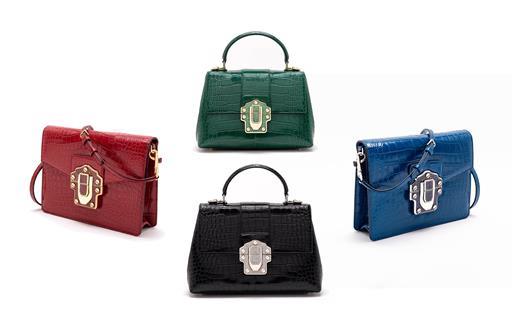Hats on!
Fashion has skewed more and more casual since the hat’s mid-century heyday, but a recent surge of creative energy and social media attention is now heralding a renaissance in the forgotten art of millinery.
These days, fashion exhibitions are as good at raising funds – and a museum’s profile – as displays of Old Masters. The UK visitor-count record is the V&A’s Christian Dior exhibition, Designer of Dreams, which attracted a crowd of almost 600,000 in 2019. Even a decade ago, its Savage Beauty show of Alexander McQueen’s work attracted almost half a million attendees. But an exhibition entirely devoted to hats? Who wears a hat these days?
A lot of people, it seems, judging from the quirky headgear and approving comments of those perusing Paris’s Palais Galliera’s Chapeaux d’Artiste exhibition. The in-depth appraisal of the work of Stephen Jones – arguably the world’s most fêted milliner – ended its run this March after entertaining some 90,000 “capellophiles”.
In light of the hat’s recent shift in status within the fashion world, the timing of the show was particularly apt. It may be 70 years since people of both sexes wore hats on a daily basis, but designer headwear has become associated with formal celebrations like royal occasions, weddings, fancy races (from Ascot and the Derby in England to Chantilly and Longchamp in France or the Melbourne Cup in Australia) and even glitzy political functions – as demonstrated by the Trump family and guests at the presidential inauguration.
 © Stephen Jones
© Stephen Jones
Spurred by social-media snaps, hats with exotic flourishes or sculptural outlines have become dress code at less formal events, too. At the other end of the scale, practical hats favoured by celebrities, from baseball caps to ski beanies and sunhats, are getting the designer (and even catwalk) treatment, like Louis Vuitton’s $700 baseball caps and bucket hats or Jacquemus’s shoulder-grazing sunshade hats.
Jones draws parallels with his early career, from which the exhibition featured a great variety of pieces, often light and outrageously feminine yet based on classic masculine shapes like the top hat, bowler or the Napoleonic bicorne. After attending art college in the 1970s, he learned millinery from the formidable Shirley Hex, who ran the bespoke hat atelier at couture house Lachasse, where Jones was interning. The New Romantic movement and clubs like the Blitz attracted fashion students and musicians dressed as exotically as possible, often with hats made by Jones. He worked with Zandra Rhodes and Vivienne Westwood, yet by the early 1980s, was also designing hats for Diana, Princess of Wales, his courtly manner making him equally acceptable in royal circles.
Jean Paul Gaultier invited Jones to Paris, spurring a love affair with France, which has influenced many of his designs and explains why the French capital was the perfect venue for an exhibition of his work. Across 40 years, he has collaborated with Paris designers from 1980s revolutionaries Thierry Mugler, Claude Montana, Comme des Garçons and Azzedine Alaïa to Schiaparelli and Dior today. He arrived at Dior with John Galliano and has worked for the house for over 25 years and five designers.
 © Maison Michel
© Maison Michel
Jones’s lasting perspective on the role of hats evolved from those early days. “The Blitz Kids wanted to promote their own, shockingly beautiful styles, using magazines which we published and videos made with our music friends,” he says. “Now, self-stylists go straight on social media, so it’s easier, but there are so many [that] you have to be very individual to stand out. A hat is a way to do that, and there is so much interest in them and, therefore, scope for young hat designers. But it is essentially a craft, and learning that properly is the first essential.”
Other hat designers, both established and new, agree with his assessment. Priscilla Royer, creative director of almost 90-year-old Paris hatters Maison Michel, now owned by Chanel as part of its Métiers d’art stable of craft brands, says she sees “a difference year on year. Apart from formal occasions, hat wearers used to be people making a big fashion statement; now, it’s a question of style on a daily basis and adding to your chosen silhouette. Now, hats are everywhere on the catwalk, it’s normal to see them on the streets. Stephen [Jones] is right about individuality, and social media is a key tool.” Maison Michel’s style, always faultlessly executed and smooth whatever the material, tends to the classics, from boaters to bucket hats, panamas and fedoras – less formal shapes that can be decorated with subtle beading, soft metallic woven bands or colourful crocheted motifs when occasion demands, like its new bridal range in soft silver and white, scarely a veil in sight.
 © Jane Taylor
© Jane Taylor
Jane Taylor has made her name creating bespoke hats for celebrities and royalty, especially the current Princess of Wales. She designed the magnificent padded, teal-blue headband with gold embroidery worn by Penny Mordaunt when she carried the heavy Sword of State in her role as Lord President of the Council at King Charles III’s coronation ceremony. The piece went viral and started a headband trend. Taylor, who grew into millinery from an interest in sculptural textiles, believes “well-crafted hats are transformative, creating a playful wow factor, and the current move away from fussy formality has resulted in a refined, pared-down look of clean lines and bold shapes while depending on time-honoured techniques”. She is seeing a return to larger brims, such as “bold boaters or fedoras but with very restrained detail, perhaps one striking feather or a perfectly placed bow. It’s a fresh, modern approach that still honours the artistry of millinery.”
In an increasingly international field, there is room for disruptors and fresh approaches. Turkish-born Merve Bayindir, who has established herself as an Ascot favourite, is self-taught, though she comes from an Istanbul textiles family. She learned tailoring from her grandmother, and her mother – with whom she set up her London business eight years ago – trained as an engineer. “I studied hat photographs to see what shapes worked and took apart old handmade hats to see the construction,” she says. Bayindir had a lucky break when images of her wearing her own design at a smart Turkish race meeting became news, but she moved to London for access to a wider market and better materials, mostly sourced in Britain. She favours large brims – “anyone can wear a large hat if the proportions are right” – and handmade floral trims for spring (which include naturally preserved flowers) but keeps shapes simple.
Most of her hats are bespoke, though finding people to make them is not easy. This is why Taylor believes the bespoke industry is important. “Each piece is unique,” she says, “and it’s a meaningful way to support a small, dedicated community who are preserving this exquisite art form for the future.”
 © Merve Bayindir
© Merve Bayindir
Three More Milliners to Know
Awon Golding
The Hong Kong-born and London-based designer has her own range while also creating bespoke women’s hats for Lock & Co Hatters. Her own collection is full of young, fun, slightly whimsical details like wide brims; “crowns” adorned with flowers, feathers and stars; and bright shades contrasted with neutrals.
 © Awon Golding
© Awon Golding
Jess Collett
A passionate hat-wearer, Collett’s creations run the gamut from the Princess of Wales’s silver-embroidered leaf “tiara” for King Charles III’s coronation to finely woven panamas and wide-brim sunhats in interesting colour combinations or trimmed with bright, woven bands and pompoms to give an edge. Her work is the definition of the new elevated casual millinery, and attracts rock royalty alongside the usual kind. jesscollettmilliner.com
Juliette Botterill
A recent choice for the Princess of Wales and other young royals, Botterill trained at the Glasgow School of Art and under Philip Treacy. Her wide-brim hats, perchers and headbands are generously trimmed with flowers or swirls and bows of silk abaca straw. These days, she’s embracing social media, while working from Shropshire ensures discretion and a pleasant excursion for bespoke clients.
 © Xavier Young
© Xavier Young





















